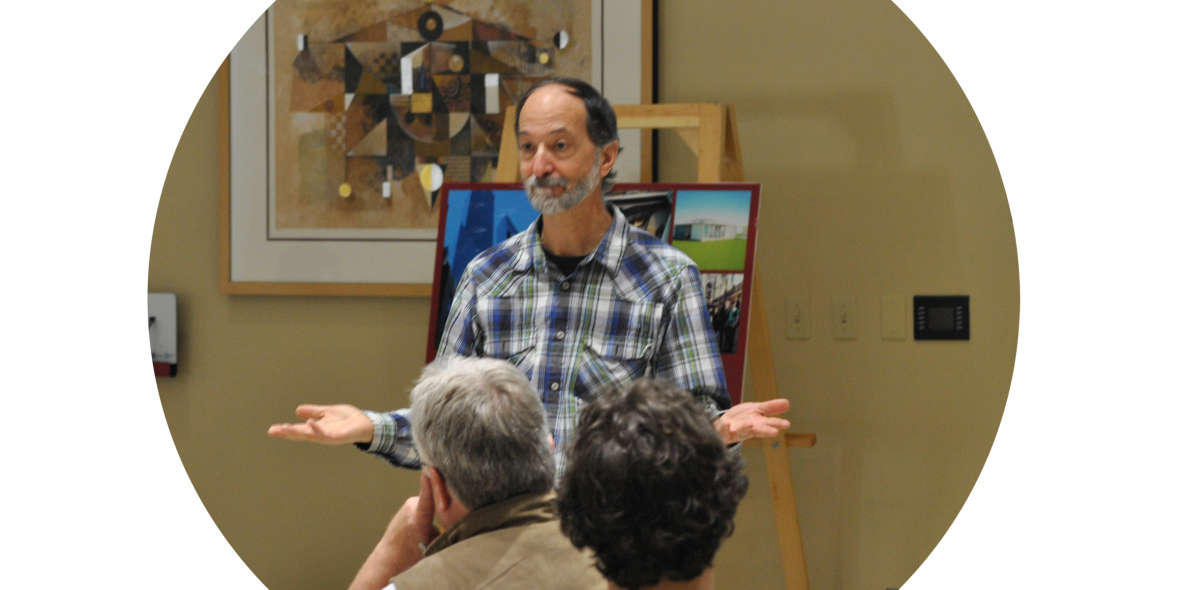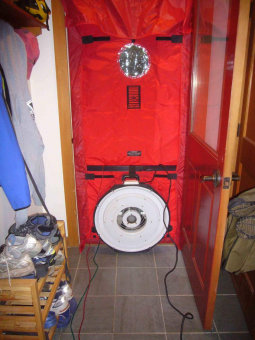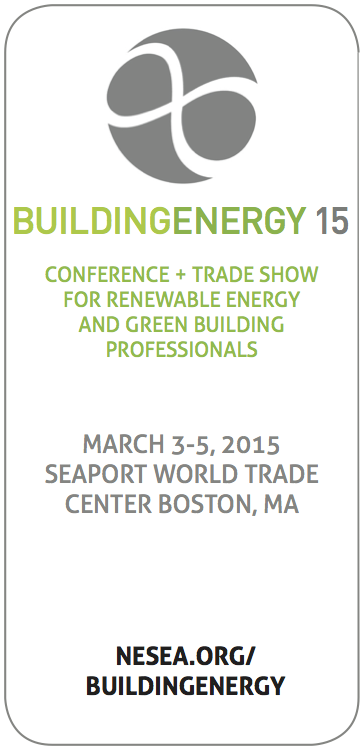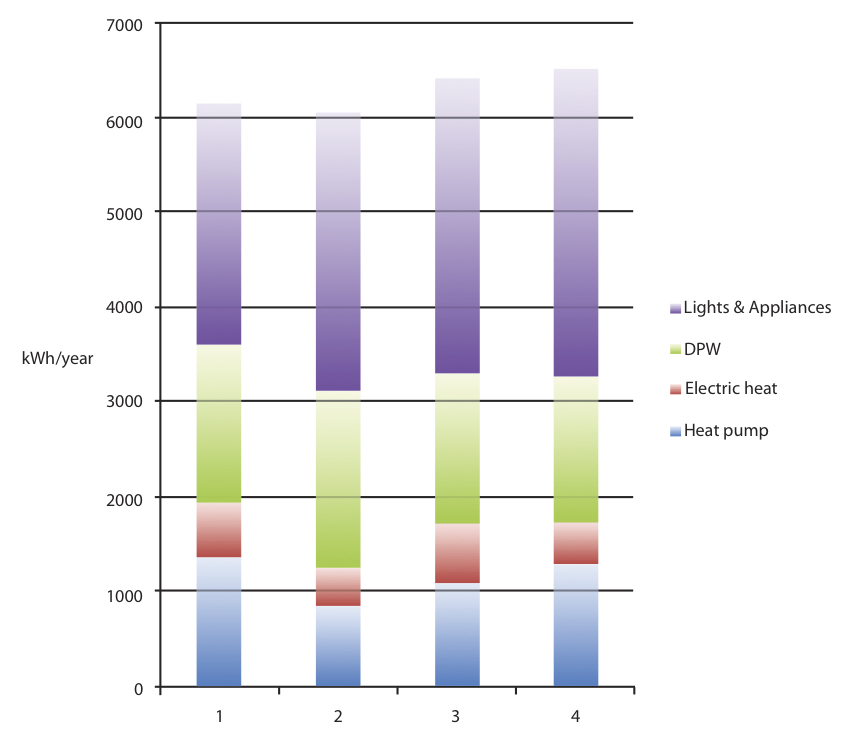
Marc Rosenbaum's 13 Best Practices for Zero Net Energy Buildings (ZNEBs)
(This is a synopsis of a peer-reviewed article by Marc Rosenbaum, found in the Fall 2014 edition of BuildingEnergy magazine), and a preview of what's in store for students of Marc's BuildingEnergy Masters Series Course, Zero Net Energy Homes.

A zero net energy building is one that uses no more energy annually than its renewable energy system generates. It imports energy when site resources are insufficient, and it exports energy when what’s generated exceeds the building’s usage. There are strategies that most of these buildings share, that permit us to begin to codify best practices for these homes and other buildings. As you’ll see, the energy system itself comes last.
-
Educate and motivate the occupants Motivating and educating the occupants in their role in the achievement of ZNE performance—the need to pay attention—is the first best practice. Building performance consultant Andy Shapiro said it best: “There’s no such thing as a net zero house, just net zero families.”
-
Focus on all energy uses, not just heating To assess how well our buildings were doing, we needed to report all energy used. Heating energy in buildings following these best practices may be only 20 percent to 35 percent of total energy used onsite. So with ZNEBs, we account for all usage and design other energy-using systems such as hot water and lighting as carefully as we design the building enclosure.
-
Orient the building well and exclude or admit the sun as needed seasonally In new construction, the building stretches out east-west, and glazing is concentrated on the south and minimized on the east and west. In houses, it’s minimized on the north as well, but in nonresidential construction it may not be, as lighting is a more significant energy use and daylighting can be accomplished well with north light. I predict that daylighting will come to be viewed as a way to create delightful, healthy spaces for people, rather than as a way to conserve energy.
-
Minimize cooling loads The typical ZNEB is built with mechanical cooling, yet the load is minimized and passive- or low-energy measures are used to boost comfort. Efficient lighting, controls, appliances, and equipment (examined below) reduce energy consumption directly while also reducing cooling loads. Strategies like ceiling fans and operable windows aid comfort.

Build a superinsulated, thermal-bridge-free envelope Superinsulation has been with us now for forty years or so, and although it’s far from standard practice in the region, it’s a basic component of ZNEBs. ZNEBs have a complete thermal boundary that includes the below-grade areas. Slab-on-grade, basement slab, and foundation wall insulation values range from R-20 to as high as R-40. Above grade, wall R-values seem to cluster around R-40, lower in larger buildings in the less severe heating climates and higher in single-family homes in the northerly locations. Roofs are built at values at least as high, and if trusses are used, the R-values are usually at least 60 and sometimes as high as 100.
-
Build it airtight For the first time, the building code may be getting serious about airtightness, but ZNEBs are going way beyond code requirements. Construction documents have dedicated air-barrier drawings, and project specifications set quantified airtightness targets and how and when the projects are to be tested. People doing blower-door testing quality assurance find themselves investing in C- and even D-rings for their blower doors, so they can test very tight ZNE homes—some are coming in at below 100 CFM50.
-
Use triple-glazed windows with insulated sash and frames Windows have always been the weak point of the thermal envelope, and that is still the case, but the standards have risen. ZNEBs are using triple-glazed (or, in rare cases, quad-glazed) windows with overall R-values ranging from the mid-5s to 7 or more. Glazings with center-of-glass R-values of 8 to 9 or even more are available, using ever more sophisticated low-emissivity coatings and low-conductivity argon or krypton in the gaps between lites.
-
Heat and cool with electrically driven air-source heat pumps ZNEBs are powered by onsite renewably generated electricity, principally produced by solar electric systems. In most cases, they are all-electric buildings, without fossil fuels or combustion. Pioneering examples of ZNE houses used ground-source heat pumps for space conditioning. These days, best practice has evolved to using inverter-driven mini split air-source heat pumps. The tremendous cost advantage of these systems allows designers to put more resources toward the building enclosure and the renewable energy system. They are also reliable, easy to zone, and come as a complete turnkey package including sophisticated (and sometimes mystifying) controls.
-
Use heat recovery ventilation All buildings need ventilation, and once they are superinsulated, the ventilation load looms large, especially in nonresidential buildings with higher occupancy. ZNEBs use heat recovery ventilation, with or without moisture recovery, to dramatically lower the thermal load of ventilation.
-
Make hot water with heat pumps or solar thermal There is no clear winner in making hot water. ZNEBs use either a solar thermal system with (usually) electric auxiliary, or an air-to-water heat-pump water heater (HPWH). If an HPWH is chosen, additional solar electric capacity must be provided to offset the electrical usage (although capacity must be supplied for the auxiliary energy used by the solar thermal system as well). Roof aperture is usually at a premium on ZNEBs, so the designer has to compare the utility of thermal versus electrical collection.
-
 Use efficient lighting and lighting controls The progress in LED lighting has been breathtaking. In ZNE homes, LEDs have been making a big dent in the niche formerly occupied by compact fluorescents, primarily due to light quality rather than straight-up energy savings. Controls that keep lighting off when spaces are unoccupied and dim lights when daylight is available are the norm. ZNEBs are being lit with 0.7 watt per square foot or even less, and actual peak lighting loads are lower still.
Use efficient lighting and lighting controls The progress in LED lighting has been breathtaking. In ZNE homes, LEDs have been making a big dent in the niche formerly occupied by compact fluorescents, primarily due to light quality rather than straight-up energy savings. Controls that keep lighting off when spaces are unoccupied and dim lights when daylight is available are the norm. ZNEBs are being lit with 0.7 watt per square foot or even less, and actual peak lighting loads are lower still.
Four years of energy use data from one net zero house: lights & appliances, not heat, consume the most energy. -
Select the most efficient appliances and equipment In homes, selecting efficient equipment for cooking (induction cooktops, convection ovens, microwaves), washing clothes and dishes, storing food, entertainment (TVs, audio equipment), and communications (modem, cable equipment, laptops) is a clear best practice. Keeping them off when not in use is even more important. That piece of equipment at the top of the efficiency ratings may seem expensive, but the calculation has to compare the incremental cost of those energy savings with the incremental cost of the larger renewable energy system needed to drive the less efficient alternative.
-
Provide a renewable energy system to power the building Yes, this is a best practice too! The choice in most cases is solar electricity, and the falling price of this technology helps keep it in the lead. Buildings 10,000 to 15,000 square feet and under usually mount the array on the roof; larger buildings often require some ground-mounted capacity as well, sometimes installed on auxiliary buildings or on parking canopies. As prices fall, apertures that may have some shading or don’t face close to south become worth considering.
Let Me Show You How To Make Your Own
I'm teaching a BuildingEnergy Masters Series course on Zero Net Energy Homes. The next one starts March 9th, 2015, and will run for 10 weeks. In that time, I'll show you the ins and outs of making zero net energy homes, and I'll provide plenty of feedback on your homework (yes, there's homework.) You'll use my energy calculators, along with everything else you've learned when you design your own zero net energy home as part of your capstone project.
Our Mission
NESEA advances sustainability practices in the built environment by cultivating a cross-disciplinary community where practitioners are encouraged to share, collaborate and learn.





Add comment